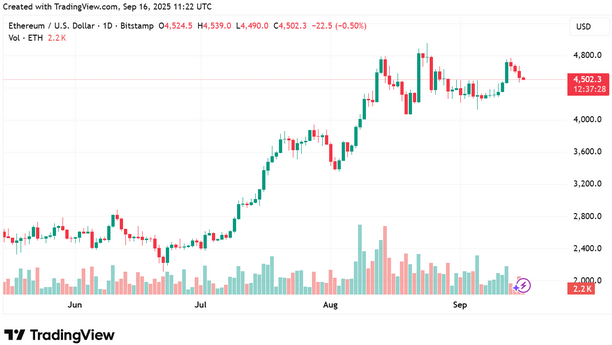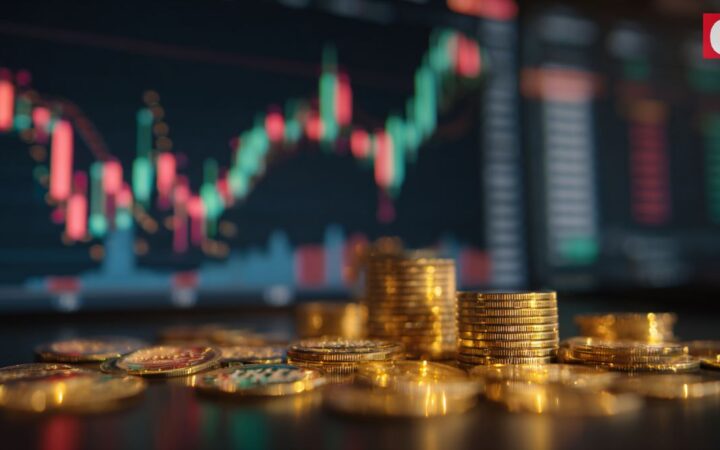Russia's ruble becomes the world’s best-performing currency, up 40% against the dollar
The ruble has jumped nearly 40% against the U.S. dollar this year, making it the best-performing currency in the world so far in 2025, according to Bank of America.
On Tuesday, the Central Bank of Russia reported that the dollar fell from 83.00 to 81.93 rubles, a 1.3% drop. The euro slipped from 96.83 to 95.67 rubles, while the Chinese yuan moved down from 11.56 to 11.37 rubles, showing a 1.6% gain for Russia’s currency.
The Kyrgyz som also traded at 1.06 per ruble, after edging up 0.01% the day before. This rally is a major reversal from the past two years, when the ruble had lost ground fast.
This is being driven by strict policies at home, less demand for imports, and rules forcing exporters to convert their earnings into local money. While the strength has surprised global markets, analysts warn it may not last long given falling oil revenues and risks tied to peace talks.
Central bank keeps pressure on borrowing and imports
Market watchers told CNBC that the strength of the ruble is less about foreign investors piling in and more about strict controls inside Russia. Brendan McKenna, an international economist and strategist at Wells Fargo, said:
The Central Bank of Russia has kept interest rates high at 20%. These borrowing costs are curbing inflation but also stopping businesses from importing goods. With fewer imports, demand for dollars and other currencies has dropped.
Andrei Melaschenko, an economist at Renaissance Capital, said there has been a fall in foreign currency demand from importers, and that drop has lifted the ruble.
Melaschenko pointed to a wave of imports in late 2024, when companies brought in consumer electronics, cars, and trucks ahead of higher import duties. By early 2025, businesses were sitting on that stockpile, which slowed down demand for new shipments. That slowdown reduced the need for dollars or yuan to pay for goods.
Exporters, on the other hand, are required to sell a share of their foreign earnings at home. The oil industry in particular has been converting dollar payments into rubles. Between January and April, major exporters sold $42.5 billion in foreign currencies, nearly 6% more than the four months before, according to data from the Central Bank of Russia.
Steve Hanke, professor of applied economics at Johns Hopkins University, pointed out that the shrinking money supply is also adding strength. He said:
Optimism about peace talks has also played a part. After Donald Trump returned to the White House, hopes grew that a deal between Russia and Ukraine could open the door to Russia’s return to the global economy. McKenna said those expectations encouraged some capital to flow back into ruble assets, even with restrictions still in place.
Export earnings weaken and risks of reversal rise
Despite its current strength, analysts warn the rally may have already peaked. Oil prices, which bring in a big share of Russia’s revenues, have dropped this year.
Melaschenko said, “We believe that the ruble is close to its maximum and may begin to weaken in the near future. Oil prices have fallen significantly, which should be reflected in a decrease in export revenue and the sale of its foreign currency component.”
McKenna added that the ruble could fall quickly if peace talks make progress. “Ruble can selloff pretty rapidly going forward, especially if a peace or ceasefire is reached,” he said. He noted that in such a case, capital controls would likely be lifted and the central bank might cut rates.
Exporters are already feeling squeezed as lower oil prices combine with a stronger ruble, cutting into their profits. The Russian government is also under pressure, with oil and gas revenues falling. Heli Simola, senior economist at the Bank of Finland, said oil and gas made up around 30% of federal revenues in 2024, leaving the government exposed.
Melaschenko explained that the Ministry of Finance has been forced to rely more heavily on the National Welfare Fund to cover spending and warned that cuts to non-priority programs may follow if revenues continue to shrink.
McKenna added that Russia’s isolation from global markets limits how much a weaker ruble could help trade. He said, “Meaning, a weaker RUB does not add much to Russia’s trade competitiveness.”
Get seen where it counts. Advertise in Cryptopolitan Research and reach crypto’s sharpest investors and builders.
Vous aimerez peut-être aussi

Ethereum Price Prediction: ETH Targets $10,000 In 2026 But Layer Brett Could Reach $1 From $0.0058

Facts Vs. Hype: Analyst Examines XRP Supply Shock Theory
